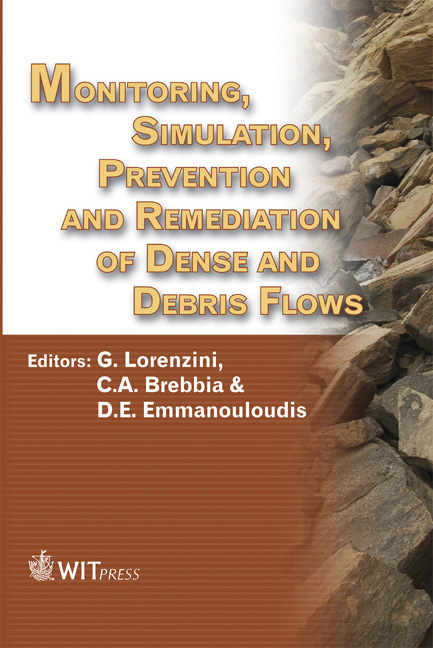Gullies And Debris Flows Analysis: A Case Study In Sardinia And A Rheological Modelling Approach
Price
Free (open access)
Transaction
Volume
90
Pages
12
Published
2006
Size
1,127 kb
Paper DOI
10.2495/DEB060011
Copyright
WIT Press
Author(s)
A. Canu & G. Lorenzini
Abstract
Soil erosion is one of the main causes of desertification in the Mediterranean basin. Recently, the role of channelled erosion in sediment delivery has been underlined by several studies. Rheological studies of debris flows, which provide information on the properties of the mixture, are essential for improving prediction and designing mitigation for potential hazardous areas. The paper has two aims: describing a simplified experimental methodology, set up for studying the relationships between Gully erosion and land use, applied to an experimental hilly site threatened by desertification in Central Eastern Sardinia (Italy); showing a debris flow model, based on a dimensional analysis and calibrated with experimental data, to identify the causes for momentum transport in the process. The results show a very significant impact of agricultural activities on Gully intensity and density, while the debris flow model proves to be capable of satisfactory predictions of actual events. Keywords: Gullies, debris flows, desertification, land use, momentum transport. 1 Introduction The soil being eroded by the water is, in the Mediterranean area, one of the most important land degradation processes. Despite Gully erosion being a significant sediment source which aggravates off-site effects of water erosion [1, 2], literature has mainly focused on rill and interrill erosion, as Gully-related in-field activities are very challenging [3]. It is then fundamental to monitor, experiment and model how the environment is affected by Gully erosion. Under the latter
Keywords
Gullies, debris flows, desertification, land use, momentum transport.





